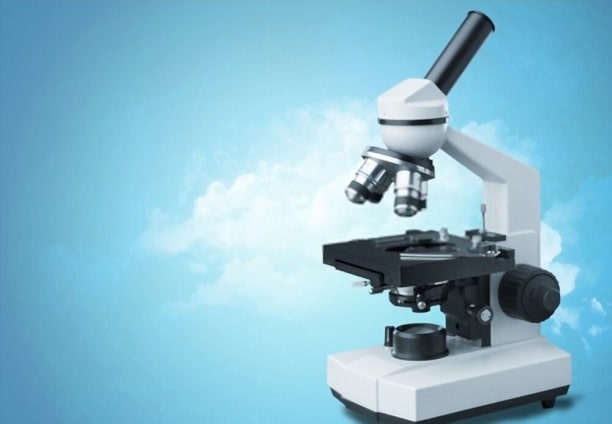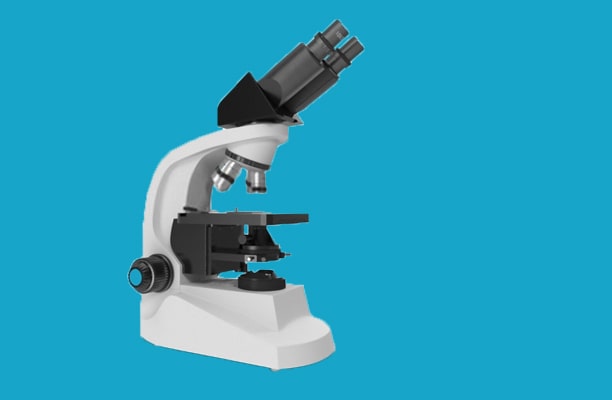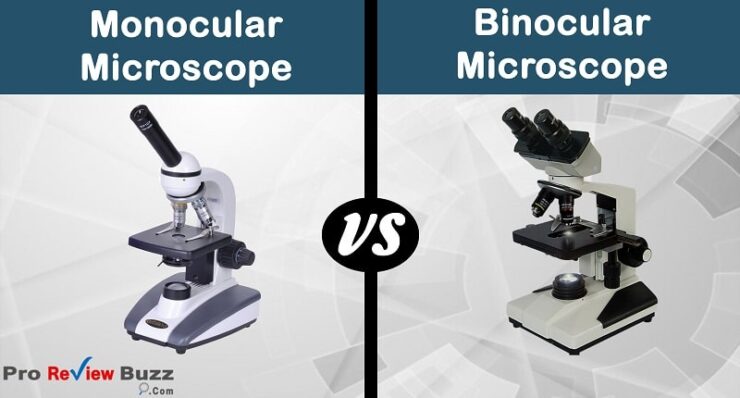A microscope is a medical instrument that has its principle based on the magnification of small objects (making small objects look larger) so that they can be observed more closely.
With microscopes, an object that is minute in size can be closely examined when the microscope produces and relays an enlarged image of the object.
According to their various uses, there are different kinds of microscopes used in certain medical analysis and examinations. Some of the different kinds of microscopes are:
- The light microscope: It includes the compound light microscope and other light microscopes such as the fluorescent microscope, the bright field microscope, the dark field microscope, the phase contrast microscope, the electron microscope (including the transmission electron microscope and the scanning electron microscope). These other kinds of light microscopes are put to use when there are objects that can not be viewed or seen when the compound light microscope is used.
- The stereo microscope: This microscope is also referred to as the dissecting microscope. Objects viewed using the stereo microscope have their images seen in a three dimensional (3D) manner due to the presence of two optical paths at different angles in the stereo microscope.
- The pocket microscope: This is a very unique kind of microscope, it is a device that is small in size but very handy for children and students. Because of its small stature and size, the pocket microscope is seen to be very portable.
- The acoustic microscope: With this microscope, ultrasound waves are used to check and assess the quality of products that have manufactured. The acoustic microscope is mostly used to detect cracks or errors in products.
- The digital microscope: This microscope is a very enthralling device that displays the image of the object to be viewed on a computer screen. It also has the feature of being able to get connected to the monitor of a computer with the use of a USB cable.
- The scanning probe microscope: It is a kind of microscope that is mostly used in the industrial and academic fields for the purposes of research and analysis. Some sciences that benefit from the use of the scanning probe microscope are biology, physics and chemistry.
- The USB computer microscope: This is seen to be an unconventional kind of microscope. It is majorly made up of a macro lens that displays the image of the object on a computer screen. The USB computer microscope connects to the computer using a USB cable.
Irrespective of these kinds of microscopes (based on their varying functions), there are other kinds of microscopes that are classified based on their physical features and the amount of eyepiece lens present in them:
- The monocular microscope which consists of only one eyepiece lens.
- The binocular microscope which consists of two separate eyepiece lenses.
The Monocular Microscope

The monocular microscope is a kind of microscope that differs from the usual microscope (with two eyepieces) that is commonly known.
Physically, it is seen to possess a single eyepiece and in addition to this, there can be one (or more) objective lens present.
Though the monocular microscope is not the most common kind of microscope, it is found to be the simplest and traditional kind of microscope – meaning that it was the first kind of microscope to be invented.
In a monocular microscope can be found a single tube containing the eyepiece at the topmost part and the objective lens at the bottom part. In some cases, the objective lens is located on a revolving turret (especially when there is more than one objective lens present).
Through the single tube and using the eyepiece, images of objects can be viewed and observed (using only one eye as opposed to the binocular microscope where both eyes are used for viewing and observing the object’s images).
Monocular microscopes are mostly seen and used in educational settings such as school laboratories and classrooms for the observation of samples that have been placed on slides.
The magnification values of the monocular microscope (when the magnification of the eyepiece is combined with the magnification of objective lens) ranges from 40 times (40x) to 1400 times (1400x), though most observations are carried out using 100 times (100x) to 400 times (400x).
In spite of these magnification values, the images of objects that are being viewed with a monocular microscope are usually seen to lack depth and look quite flat.
Because of this characteristic, this kind of microscope is not advisable to be used by young children as it can be seemingly difficult to interpret and understand the images that are produced from the object being viewed.
As a result of these features associated with the monocular microscope, it is commonly put to use in viewing and observing larger but still microscopically sized organisms (such as cells, plants and animals).
The general features of a monocular microscope include an arm, a mechanical stage, an eyepiece, the objective lens, a diaphragm, a base, a nosepiece, stage clips, an inbuilt light source, a power switch, a coarse adjustment knob and a fine adjustment knob.
Read more blog : Best Bench Priming Tools
Types of Monocular Microscopes
Monocular microscopes can be divided into two (based on the differences in the lenses that are present in the monocular microscope).
The two types of monocular microscopes are:
- The monocular microscope with a single lens: Some examples of this type of monocular microscope consist of reading glasses, jeweler’s loupes, jeweler’s lenses and magnifying glasses. Though these examples are quite unconventional, they are still classified as single lens monocular microscopes.
- The monocular microscope with a compound lens: An example of this type of monocular microscope is the compound lens magnifier, and another example is the compound microscope (with only one eyepiece instead of the usual two eyepieces).
Some other distinct features and differences that have been noted in both types of monocular microscopes:
- Single lens monocular microscopes have weaknesses relating to chromatic aberration (color distortion) and spherical aberration (focus distortion). In addition to these weaknesses, there is also seen to be a distortion of images. These register as certain disadvantages and they limit the use of the single lens monocular microscope.
- On the other hand, the compound lens monocular microscope is seen to have a higher magnification and it is also very capable of correcting some of the aberrations that occur when using the single lens monocular microscope.
The Binocular Microscope

The binocular microscope is one of the commonest kinds of microscopes that is seen today. It slightly differs from the simple microscope (the monocular microscope) physically and this is due to the presence of two eyepieces.
The presence of the two eyepieces makes it easier for the images of objects to be observed and studied with both eyes instead of one eye (when using the monocular microscope).
The use of both eyes when using the binocular microscope helps to relieve the stress and strain gotten from viewing with only one eye, but since the two eyepieces are connected to a single objective lens at a time, the images being viewed appear flat.
Though there are three objective lenses available in a binocular microscope, the lenses are not of the same objective or magnification power.
One of the lenses has a magnification power of 10 times (10x), the other lens has a magnification power of 40 times (40x), while the last lens is seen to have a magnification power of 100 times (100x).
On the side, the eyepieces of the binocular microscope usually have a magnification of 10 times (10x), 12.5 times (12.5x), 15 times (15x) or even up to 25 times (25x).
With all this magnification power multiplied and combined, it is very possible that using both the objective lenses and the eyepieces can give a combined and higher magnification power of more than 1000 times (1000x).
The general features of a binocular microscope include a higher magnification range, an arm, a mechanical stage, a coarse adjustment knob, a fine adjustment knob, a base, two eyepieces, a nosepiece, three objective lenses, an inbuilt light source, a diaphragm, stage clips, a power switch and a substage condenser lens.
Types of Binocular Microscopes
Binocular microscopes are seen to vary in relation to the certain features they possess and the functions they perform.
Some of the different types of binocular microscopes present today are:
- The compound binocular microscope: This binocular microscope portrays a two dimensional (2D) image of the object as a result of the single optical path present in the microscope. Due to this particular feature, whenever an object is viewed, the image is observed to appear looking flat.
- The stereoscopic binocular microscope: Present here can be found two separate optical paths (unlike the compound binocular microscope which has only one). As a result of the presence of these optical paths, the stereoscopic microscope displays two separate images (with each having slightly different angles) to both of the eyes. These two separate images of the object undergo overlaying which causes a single three dimensional (3D) image to be formed.
- The comparison binocular microscope: This kind of binocular microscope has a slightly different function from the other binocular microscopes; its function is fully based on the ability of the microscope to compare two samples. With the comparison binocular microscope, because of the two different samples, different images are displayed to each of the viewer’s eyes. This process is carried out to enable comparison between the different samples, but at the same time.
Differences between the Monocular and the Binocular Microscope
Both the monocular and the binocular microscopes have their general features and similarities, but notwithstanding this fact, these two kinds of microscopes are found to be very different in their own ways.
Some of the differences between the monocular microscope and the binocular microscope include:
- The number of eyepieces present: The monocular microscope possesses a single eyepiece while the binocular microscope has two separate eyepieces present.
- Magnification: The maximum magnification level of a monocular microscope is not very high and due to this feature, the monocular microscope has a limited function in terms of the kinds of objects that can be viewed and studied (larger microorganisms are best suited for the monocular microscope). On the other hand, the binocular microscope has a magnification level as high as 100 times (100x) and with this feature it is able to view very minuscule microorganisms while displaying their clear images to the viewer.
- Light source: Both types of microscopes have and use different kinds of light source. The monocular microscope uses a reflective panel as its light source, while the binocular microscope makes use of an electronic lighting or illuminator as its light source. Electronic illuminators need electric current to function and they are seen to offer better light visibility than reflective panels.
- Comfort: It is more comfortable and convenient for people to use the binocular microscope than the monocular microscope. This is because of the number of eyepieces that are possessed by the microscopes; the binocular microscope possesses two separate eyepieces while the monocular microscope possesses a single eyepiece. Observing and studying the image of an object with the single eyepiece on a monocular microscope is more strenuous and tasking on the eyes of the viewer, as opposed to when both eyepieces on the binocular microscope are used to view the image of the object (especially for a long period of time).
- Objects that can be viewed: When using the monocular microscope, you can view and study organisms such as insects, leaf veins and algae (which are larger organisms) in order to get the best results out of it. With the binocular microscope, you can view and study much smaller microorganisms such as fungi, bacteria and viruses. These features affect the usability of both microscopes and this is why the monocular microscope is best suited to be used in an educational setting, while the binocular microscope is best suited to be used in a medical or laboratory setting.
- Portability: The portability of the monocular microscope and the binocular microscope is in reference to their size. The monocular microscope is divided into different types and some of them are so small in size and weight that they could easily fit into a pocket. The binocular microscope is also divided into different types but they are not so small in both their size and weight and because of this, they occupy space and can not be carried at all times.
- Cost: As a result of the differences between the two microscopes (the monocular microscope and the binocular microscope), their costs are also affected. Binocular microscopes are more expensive than monocular microscopes and this is largely because of the high impact their differences have on the functions that they are able to perform.
The differences found in the monocular microscope and the binocular microscope are what makes them peculiar and gives them a sense of variety.
It is often said that variety is the spice of life, so it is safe to say that it would be quite boring if all microscopes were exactly the same.
Microscopes were invented to magnify tiny objects and microorganisms so that they could be seen, and both kinds of microscopes (the monocular microscope and the binocular microscope) possess that function.

